

Send us your story! We invite all of you to send a photo, graduation date and degree, and a brief summary of your professional and personal lives since graduation. Renew old ties and make new ones! Send your photographs and biographies to bioe@clemson.edu.
Tell us where you are and what you’re doing by updating your information. If we know where you are, we can tell you about upcoming events!
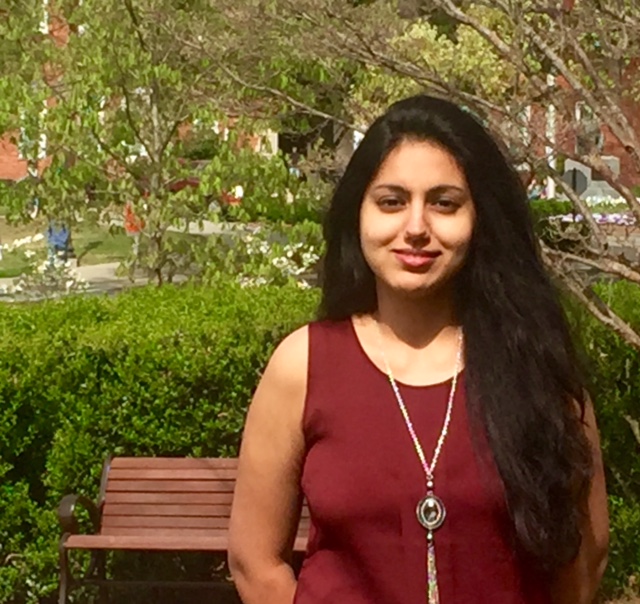 Dr. Astha Khanna received her Ph.D. in Bioengineering in 2017 from Clemson University, under the guidance of Dr. Martine LaBerge. She is now working as the Head of Product Development and Quality assurance at Graver Technologies. There, she leads a cohort of dedicated scientists toward developing and implementing innovative approaches to bioengineering education, research, and advocacy for research funding. Her research is focused on novel surface modification approaches for biomaterials and the design of biocompatible medical devices and bio-fabrication approaches for improved vascularization of engineered tissues and organs.
Dr. Astha Khanna received her Ph.D. in Bioengineering in 2017 from Clemson University, under the guidance of Dr. Martine LaBerge. She is now working as the Head of Product Development and Quality assurance at Graver Technologies. There, she leads a cohort of dedicated scientists toward developing and implementing innovative approaches to bioengineering education, research, and advocacy for research funding. Her research is focused on novel surface modification approaches for biomaterials and the design of biocompatible medical devices and bio-fabrication approaches for improved vascularization of engineered tissues and organs.
Bioengineering graduate Jessica Link '19, B.S., will receive $32,000 to complete a specially designed, cutting-edge master’s degree program based on a yearlong classroom experience.
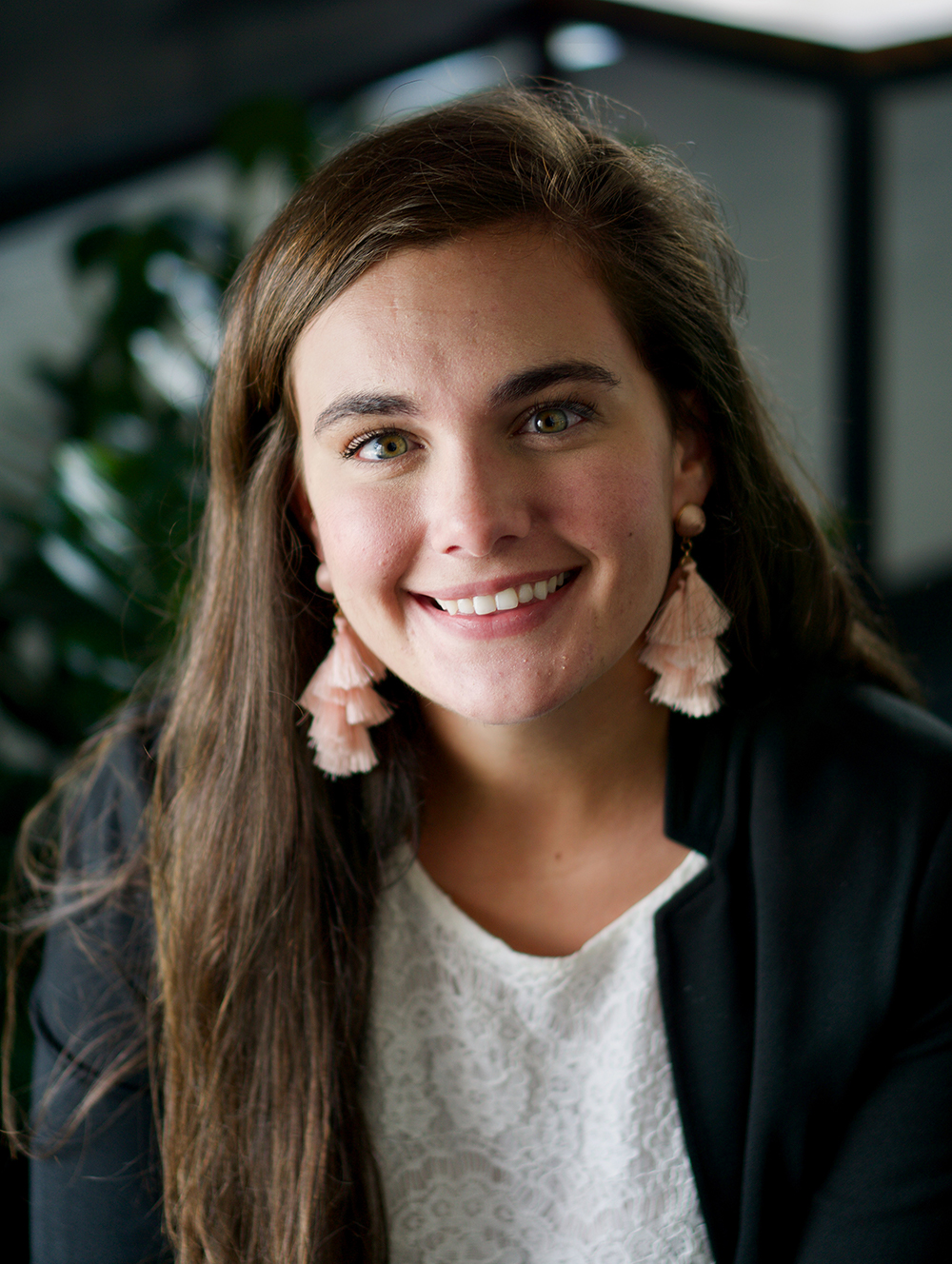 The WW Foundation is pleased to announce the 2020 class of WW Pennsylvania Teaching Fellows. Among the class is Jessica Link (Clemson University '19, B.S., Bioengineering).
The WW Foundation is pleased to announce the 2020 class of WW Pennsylvania Teaching Fellows. Among the class is Jessica Link (Clemson University '19, B.S., Bioengineering).
The highly competitive program recruits both recent graduates and career changers with strong backgrounds in science, technology, engineering, and math—the STEM fields—and prepares them specifically to teach in high-need secondary schools. Each Fellow receives $32,000 to complete a specially designed, cutting-edge master’s degree program based on a yearlong classroom experience. In return, Fellows commit to teach for three years in the high-need Pennsylvania schools. Throughout the three-year commitment as a teacher of record at a public school, Fellows receive ongoing support and mentoring.
Fellows in this first class have recently begun their programs at Duquesne University, the University of Pennsylvania Graduate School of Education, and West Chester University.
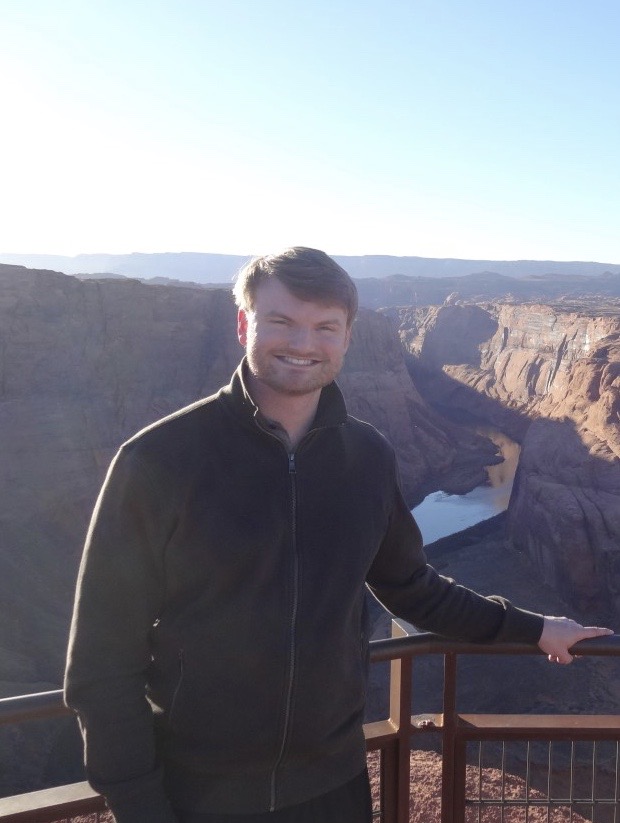 At Abbott, I apply design control techniques to link design requirements through risk management to production and process controls. I rely heavily on data to make data-driven decisions to continuously improve product reliability and reduce cost. Daily, I work to ensure the success of new product transfer through design and process verification and validation activities by collaborating with R&D engineers and manufacturing engineers.
At Abbott, I apply design control techniques to link design requirements through risk management to production and process controls. I rely heavily on data to make data-driven decisions to continuously improve product reliability and reduce cost. Daily, I work to ensure the success of new product transfer through design and process verification and validation activities by collaborating with R&D engineers and manufacturing engineers.
At Clemson, I went through the electrical engineering track while earning my bachelor’s and master’s degrees in Bioengineering. Now, I am a member of the Biomedical Engineering Society’s Industry Committee and serve on Clemson Bioengineering’s External Advisory Board. Clemson Bioengineering was a cornerstone for me in understanding the importance of patient-focused engineering. Rather than engineering for the sake of engineering, a patient-focused approach through the application of physics and design controls allows for the customer to need to be achieved at a lower cost.
Outside the medical device industry and academia, I enjoy traveling the world and learning from diverse cultures. I currently speak Spanish, Italian, and Portuguese and look forward to learning more languages to connect with others around the world!
Tim Olsen’s recent visit to the department gave students a chance to ask about the skills needed in the workplace:
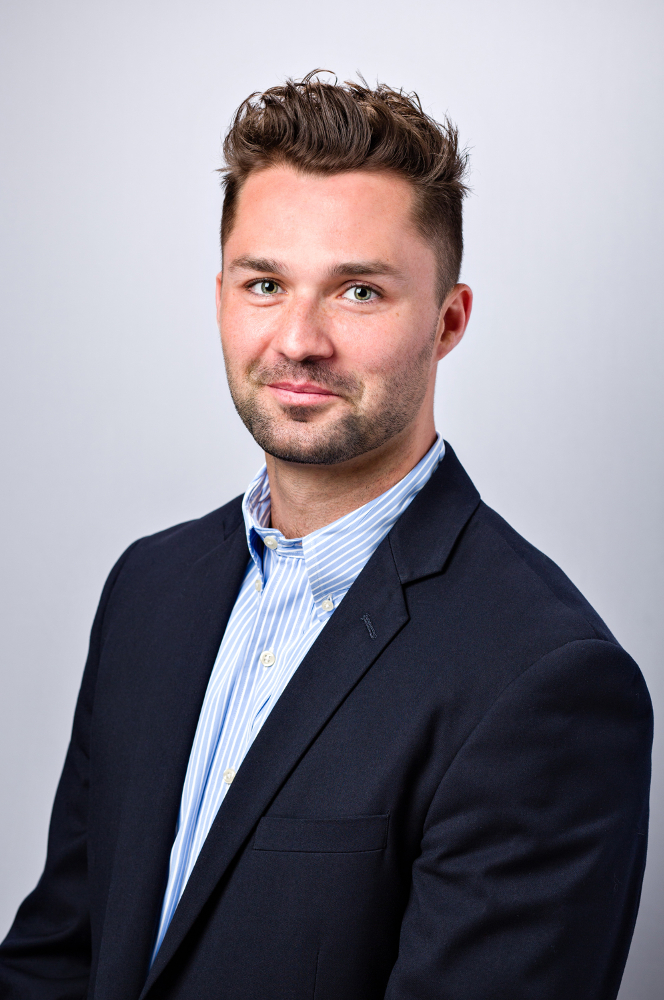
Below, Nick Erdman suggests that students develop a habit that can lead to success.
Be sure to take advantage of every opportunity that presents itself. Try and attend as many workshops or lectures as you can. If there are opportunities to learn a new scientific skill, be sure to get the training. You may not need the skill at the time, but having the experience will make you more marketable when searching for a job. -Dr. Nick Erdman
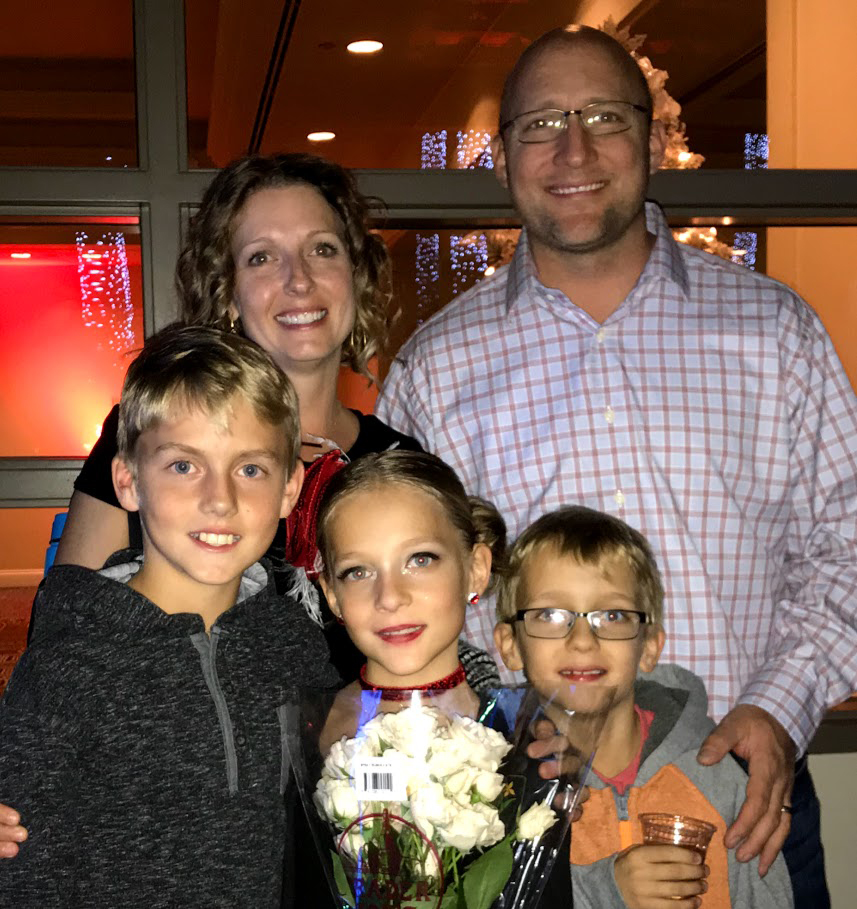 With the majority of my time as a Gore Associate spent as a Product Specialist, I have had the opportunity to work with dozens of world-renowned physicians and surgeons leading their respective fields in cutting-edge therapies, some of which I have had the honor to help develop. I have also had the privilege to continue working with numerous fellow Clemson BioE alumni who have since joined me at Gore, all of whom have been excellent ambassadors for the Department. Nothing could be more exciting for me and my wife, who is also a Clemson grad, than bringing a little bit of Clemson to Arizona — one new Gore Associate at a time! Go Tigers! -Dr. Josh Lovekamp
With the majority of my time as a Gore Associate spent as a Product Specialist, I have had the opportunity to work with dozens of world-renowned physicians and surgeons leading their respective fields in cutting-edge therapies, some of which I have had the honor to help develop. I have also had the privilege to continue working with numerous fellow Clemson BioE alumni who have since joined me at Gore, all of whom have been excellent ambassadors for the Department. Nothing could be more exciting for me and my wife, who is also a Clemson grad, than bringing a little bit of Clemson to Arizona — one new Gore Associate at a time! Go Tigers! -Dr. Josh Lovekamp
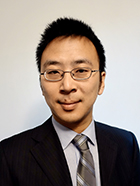 Dr. Zhen Ma, who earned his Ph.D. in 2011, was awarded the 2017 Young Researcher Americas award by Lush Fresh Handmade Cosmetics for his Human Developing Heart Model for Animal-Free Embryotoxicity Drug Screening. The award includes £10,000. Dr. Ma runs the System Tissue Engineering and Morphogenesis Lab at Syracuse University, where he is an assistant professor and Carol and Samuel Nappi Research Scholar.
Dr. Zhen Ma, who earned his Ph.D. in 2011, was awarded the 2017 Young Researcher Americas award by Lush Fresh Handmade Cosmetics for his Human Developing Heart Model for Animal-Free Embryotoxicity Drug Screening. The award includes £10,000. Dr. Ma runs the System Tissue Engineering and Morphogenesis Lab at Syracuse University, where he is an assistant professor and Carol and Samuel Nappi Research Scholar.
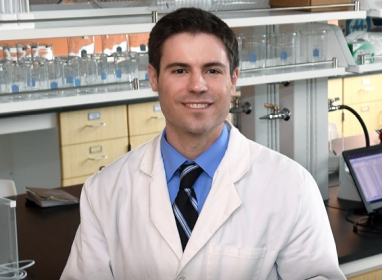 Dr. Vince Beachley, who earned his Ph.D. in 2011, has been awarded the National Science Foundation CAREER. With the $500,000 grant, Dr. Beachley will study his novel research, “Post-Processing Polymer Nanofibers for Improved Mechanical Properties.” At Rowan University, Dr. Beachley is an assistant professor of bioengineering in the College of Engineering.
Dr. Vince Beachley, who earned his Ph.D. in 2011, has been awarded the National Science Foundation CAREER. With the $500,000 grant, Dr. Beachley will study his novel research, “Post-Processing Polymer Nanofibers for Improved Mechanical Properties.” At Rowan University, Dr. Beachley is an assistant professor of bioengineering in the College of Engineering.

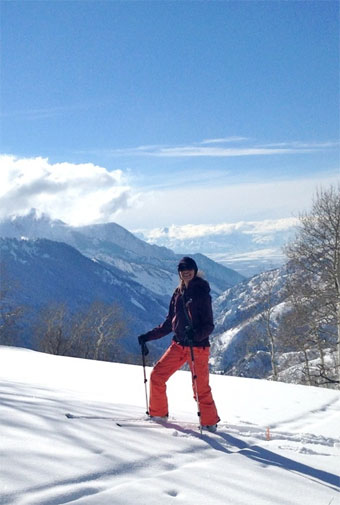 Sarina Kay Sinclair, Ph.D. 2009, Research Faculty Member, University of Utah Department of Orthopaedics
Sarina Kay Sinclair, Ph.D. 2009, Research Faculty Member, University of Utah Department of OrthopaedicsAfter graduating, I took a postdoctoral fellowship at the University of Utah Department of Orthopaedics and am now a research faculty member. Since joining the University of Utah my work has been focused on the safe introduction of osseointegrated (OI) implants for amputees in the United States. I am currently managing an upcoming clinical trial at the Veterans Affairs Salt Lake City Health Care System for a new OI design that has been funded by a Department of Veteran Affairs Merit Review grant with an industry sponsor, DJO Surgical. This project has been very rewarding for me and I enjoy working with the military, veteran, and civilian amputees and clinicians. My other research focus has been the skeletal attachment of devices in the spine, and I have been a consultant and collaborator with Zimmer Spine on a spinal fusion device that received FDA approval in 2011. I have not given up my tissue engineering roots and continue working with our orthopedic surgeons to improve surgical techniques using cell-based therapies. I really enjoy the mix of academic, industrial and clinical endeavors that are part of my job.
One thing I learned from my years at Clemson was that we work hard but we play hard, something that is easy to do in the beautiful state of Utah and the surrounding areas. Kris and I have taken every opportunity to explore the Wild West, from Arizona to Canada, during our four years here. We are avid skiers, mountain bikers, rock climbers, and hikers. I miss the East Coast most during football season but we have adopted a great local bar as our Clemson-watching spot and have recruited a few more Tiger fans! I am proud of my Clemson roots (see orange and purple ski outfit) and am thankful for the foundation I gained there to help me have a successful career in orthopedic research. Congratulations on your Golden Anniversary!
After receiving a Ph.D. in Bioengineering in 1968, I returned to the faculty of Emory University in the Department of Radiology. My dissertation research on computer interpretation of medical images was very much “cutting edge” at that time. Through research and development, clinical support, and especially education, I combined the fields of bioengineering and medical physics to focus on the rapidly expanding specialty of medical imaging and radiology.
Throughout my career, my goal has been to develop a global infrastructure of knowledgeable engineers and medical physicists who can support effective and safe clinical utilization of modern medical imaging technology. I work directly with engineers and medical physicists from approximately 50 developing countries who come together at an international institute where I serve as a director and principal faculty.
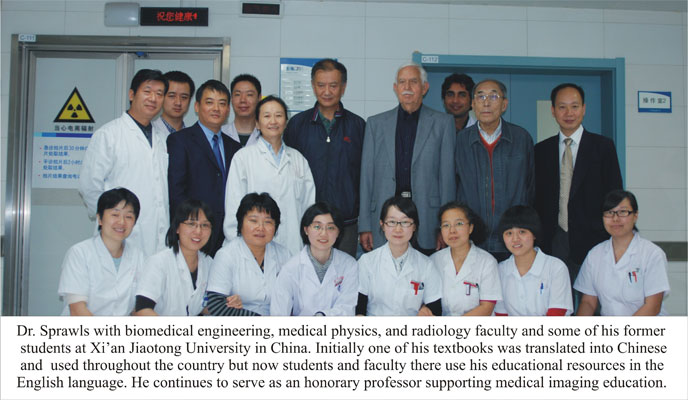
A special interest has been innovations in the educational process, especially in the fields of medical engineering and physics and related clinical applications. Much of this has focused on developments in technology to enhance human performance for both learners/students and learning facilitators/teachers, with a major emphasis on the value of shared resources. I call this work, which has been recognized by numerous national and international awards from both engineering and medical physics organizations, “Taking Clemson Bioengineering to the World.
I am now a Distinguished Emeritus Professor at Emory University, working through several national and international organizations to provide educational resources and activities. Through the Sprawls Educational Foundation, I support the Sprawls Global Collaborative Teaching Network with textbooks I have authored and an extensive collection of open-access educational resources.
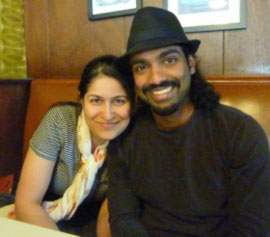 Aditee and Jai
Aditee and Jai
If wishes were horses I would “ride” in a hammock all day long and do in-depth book reviews for a living but the truth is that following the excellent Clemson experience, I started my career in Research & Development at St. Jude Medical focused on developing strategies to realize minimally invasive heart valve replacements where I find myself today in the capacity of a Senior Scientist. My graduate work at Clemson, where I worked on tissue engineering approaches to create small-diameter vascular grafts, prepared me well for the challenges in the medical device industry. The overall Clemson experience transcends pure technical and scientific knowledge gained over time; it’s something that defines a larger part of me and therefore, I truly bleed orange. An avid reader with a voracious appetite for volunteer activities, I dream about getting all the pages in my passport filled with entry stamps of different countries.
…tried putting the ‘search’ back into research but being swept up in the tsunami called Transcatheter heart valve development, I realized that 90% of one’s problems can be solved by good marketing, procrastination skills solve the remaining 10%. My Mondays start with creative ideas for next big thing and Fridays invariably conclude with pledges to give it all up and become a handsome millionaire. But then there is always active cricket, music, and dreaming of being the next soccer star that keeps me going. Being a sample size of one, neither statistically significant nor representative of anything, I have learned that I know nothing. Hang on, people are willing to pay for what I know. Life is good!! Come to the dark side….together we will rule the galaxy.
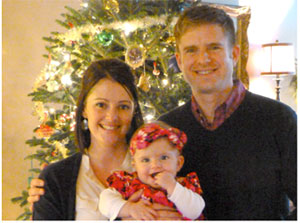
Having accepted a job as a Product Specialist in the Medical Division of W.L. Gore & Associates, my wife Helen and I relocated to Flagstaff, AZ, shortly after graduation. W.L. Gore & Associates is a global company that utilizes expertise in fluoropolymers to develop best-in-class products for numerous industries. Here in Arizona, we design and develop medical devices for cardiovascular applications. In my role as a Product Specialist, I interact with individuals from a variety of backgrounds (e.g., physicians, engineers, and business leaders) in helping to ensure the success of a particular product from concept through commercialization. I may not be working in a lab anymore, but the skills I learned during my time at Clemson proved to be invaluable almost every day of my working life. I couldn't think of a job that better suits my personality and interests. Living in a mountain town that is just over an hour from the Grand Canyon, a good deal of my leisure activity now consists of outdoor activities such as hiking, running, and mountain biking. In July of 2012, my wife and I welcomed a baby girl (our first child), Miriam Rose. In truth, since her birth, my leisure activity now mostly consists of playing with my daughter.
GREENVILLE, South Carolina, Oct 24, 2013 -- KIYATEC Inc. (www.kiyatec.com) today announced that the National Cancer Institute (NCI), one of the 27 institutes and centers that comprise the National Institutes of Health (NIH), awarded the company an approximately $295,000 Phase I SBIR (Small Business Innovation Research) contract to establish 3D breast cancer models using living cells obtained directly from breast cancer patients. Accurate modeling of the response of a patient’s cancer to a drug will help them in two ways – to reduce failures of anticancer drugs during clinical trials because of earlier, more relevant information on drug effectiveness, and to test patient-derived samples in real time for clinical decision making specific to that individual.
The goal of this contract, titled “3D Human Tumor Co-Culture System for Accurate Prediction of Clinical Efficacy”, is to create living cell-based models of the breast cancer microenvironment. Cells grown or “cultured” in environments that mimic the conditions inside the human body have been shown to better predict the treatment outcomes that are seen in patients. Importantly, these models are designed to be monitored and evaluated for a response (for example cell death resulting from a drug) using non-destructive imaging and other means. Current techniques of measuring the effect of a drug can require analysis methods that are destructive to the cells in the models. The models will progress from using cell lines to using cells obtained directly from patients. Ultimately, the “micro-tumors” using patient-derived breast cancer cells of selected sub-types will be treated with approved cancer drugs known to be clinically effective for those sub-types, enabling a measure of the model’s predictivity of the clinical outcomes seen in patients.
"We are very grateful for this award from the National Cancer Institute through the SBIR program to advance KIYATEC's development of predictive 3D cell-based cancer models, and are proud to be collaborating on an initiative that can potentially bring benefit to the millions of American women who have or will be diagnosed with breast cancer," said Dr. Matt Gevaert, KIYATEC’s CEO. "This contract’s focus on breast cancer builds on our existing body of work across multiple solid tumor types, including ovarian cancer. Demonstrating this breadth of applicability is important as we engage pharmaceutical and biotechnology companies to leverage KIYATEC’s assays to help them better predict human patient response before, during and after clinical trials. This contract will aid us in doing so and we expect it will catalyze further exciting and meaningful ex vivo cancer assay development." The contract is being funded in whole or in part with Federal funds from the National Cancer Institute, National Institutes of Health, Department of Health and Human Services, under Contract No. HHSN261201300043C.